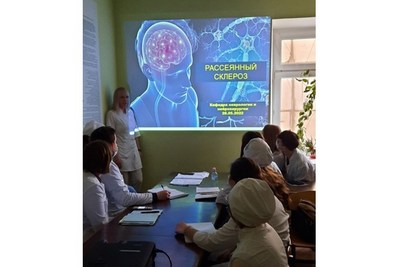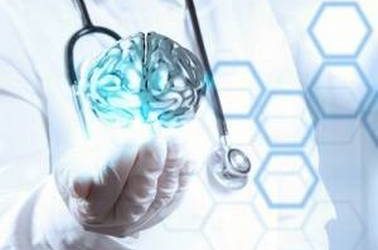 World Multiple Sclerosis Day is celebrated on May 27. It was established in 2009 on the initiative of the International Federation of Multiple Sclerosis Society in order to disseminate information about this disease, prevention and treatment. Its main task is to support those who are struggling with a serious illness, as well as to draw public attention to the existing problem.
World Multiple Sclerosis Day is celebrated on May 27. It was established in 2009 on the initiative of the International Federation of Multiple Sclerosis Society in order to disseminate information about this disease, prevention and treatment. Its main task is to support those who are struggling with a serious illness, as well as to draw public attention to the existing problem.
Today, 2 million people have been diagnosed with multiple sclerosis worldwide, about 150 thousand in Russia, and the incidence rate is growing. Every year, 6.7 thousand people make such a diagnosis for the first time. 78.7% of patients do not work, the main reason for unemployment is the inability to work due to poor health.
Multiple sclerosis (MS) is a chronic, progressive, demyelinating disease of the nervous system, characterized by signs of a multi-focal lesion of the white matter of the brain and spinal cord, leading to severe disability. This disease is more often diagnosed in women aged 20 to 40 years.
Today, the exact cause of this disease has not been established, however, there are a number of factors that, one way or another, can cause a malfunction in the immune system: frequent viral infections; mental and physical injuries; lifestyle (prolonged stress, smoking, obesity); genetic predisposition; unfavorable environmental environment; vitamin D deficiency.
The clinical symptoms of multiple sclerosis are diverse. The most common are acute loss of vision in one eye, or double vision; decreased strength in the extremities, rotational dizziness, impaired sensitivity, balance, pelvic organ function (more often a tendency to delay urination). There may also be fatigue, numbness and tingling of the skin, swallowing disorders, pain, mood disorders and memory problems.
The World Day against Multiple Sclerosis is a date that gives an opportunity not only to remember people living with a serious diagnosis, but also to talk about the importance of timely diagnosis, regular examinations and taking care of their own health.
Within the framework of the Day, various events are held in many countries by medical, public and charitable organizations to inform the population about this disease and its real consequences, medical forums are also organized.
The most informative and promising method of topical diagnosis of PC is magnetic resonance imaging (MRI), which enables to visualize the multifocality of CNS lesions in MS and in dynamics allows us to judge the stage of the demyelination process in a particular patient. However, MRI results taken in isolation (without taking into account the clinical picture of the disease) are not an absolute criterion in the diagnosis of PC. A combination of laboratory tests, magnetic resonance imaging (MRI) and tracking the dynamics of the patient’s clinical picture helps in making a final diagnosis.
It is important to note that over the past two decades, medicine in the field of multiple sclerosis has stepped forward. Early diagnosis and well-chosen therapy today slow down the course and significantly reduce the symptoms of the disease, which allows maintaining the quality of life of patients at a high level. The main method of treating multiple sclerosis today is drug therapy aimed at accelerating recovery after exacerbations, changing the course of the disease and controlling symptoms. Drugs based on interferon beta-1b, interferon beta-1a and glatiramer acetate are most widely used as first-choice drugs. In Russia, medicines for the treatment of multiple sclerosis are purchased at the expense of the state budget within the framework of the “7 nosologies” program – 24% of the VZN budget is allocated for this.
The Department of Neurology and Neurosurgery held round tables within the framework of the World Day against Multiple Sclerosis among 4th year students of the Faculty of Medicine and clinical residents. The staff of the department take an active part in the diagnosis and treatment of patients with multiple sclerosis within the framework of the Department of Planned Neurology and polyclinic admission of COMSCB.

